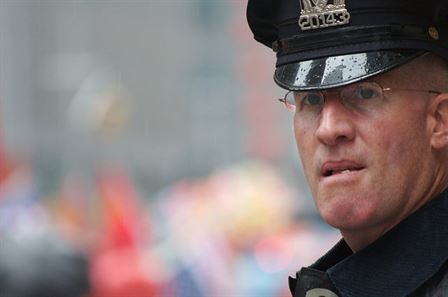The much revisited American debate over gun control has frequently been in the news lately after 17 people lost their lives in a shooting at Stoneman Douglas High School in Florida. Since the tragedy occurred, survivors of the shooting have been organizing rallies aiming to pass gun control legislation.
With the recent school walkout and the upcoming March for Our Lives, gun control has been one of the most prominent debates in the U.S. for almost a month now. Missing from this discussion, however, is what gun legislation could mean for law enforcement.
With the increasing militarization of police departments and the alarming rates at which trained police kill or use violent force against citizens, it is my belief that gun control needs to include disarming the police to the same extent citizens might be disarmed or at least limiting what types of weapons police departments have access to.
The lack of federal gun legislation in the U.S. is dangerous because many citizens have easy access to automatic and semi-automatic weapons. Many states do not require citizens to be trained with the weapons they are purchasing or to pass a background check. This lack of regulation has resulted in the U.S. being home to more mass shootings than any other country.
However, it would be just as dangerous to make it harder for citizens to obtain certain weapons that more and more police departments have easy access to. Studies gathered by the FBI show that on average, police in the U.S. kill 400 citizens every year, with estimates that the number is likely higher. The Supreme Court had even ruled back in 2005 that police officers have no constitutional duty to protect citizens. It is dangerous to suggest limiting citizen’s access to military grade weapons without discussing limitations on police access to military grade weapons.
Many supporters of gun control will point to countries with strict gun laws such as Japan and Australia, but rarely acknowledge that Japan and Australia also limit what firearms their police are allowed to use. In Japan, police are only allowed to carry pistols and are required to lock up their weapons when off duty. Even special units are allowed at most to use semi-automatic pistols and only in rare circumstances. Australian police are also only armed with pistols and even their Police Tactical Group have few semi-automatic weapons.
This is a stark difference from the U.S. in which the 1033 Program requires the Department of Defense to transfer excess military equipment to local law enforcement. If American advocates of gun control are going to use countries with strict gun laws as examples to follow, it is important to also examine how those countries regulate their police department and limit the state’s ability to inflict violence on citizens.
Mass shootings in the U.S. have demonstrated that not all citizens can be trusted with certain firearms, but American police have also demonstrated that they cannot be trusted with these weapons either. As many people march for gun control and increased requirements for citizens to obtain military grade weapons, it is important that they also demand stricter accountability for police and restrictions on what weapons police departments can own.



